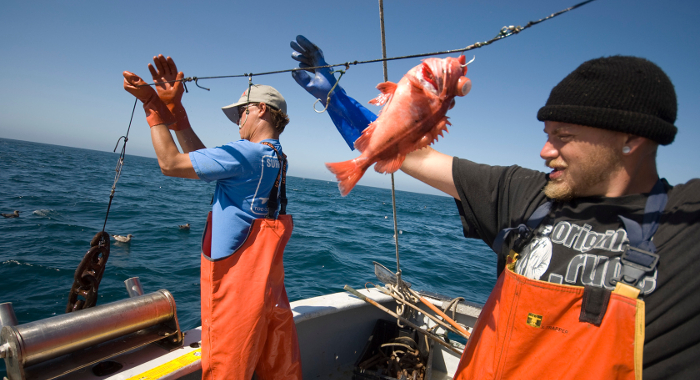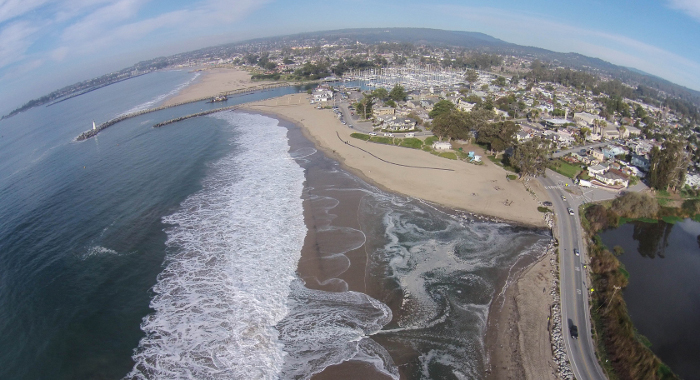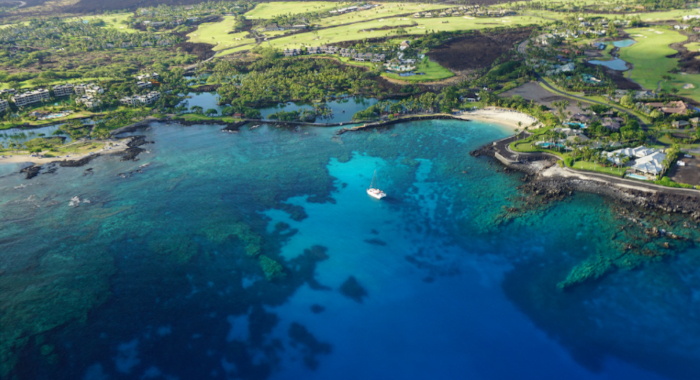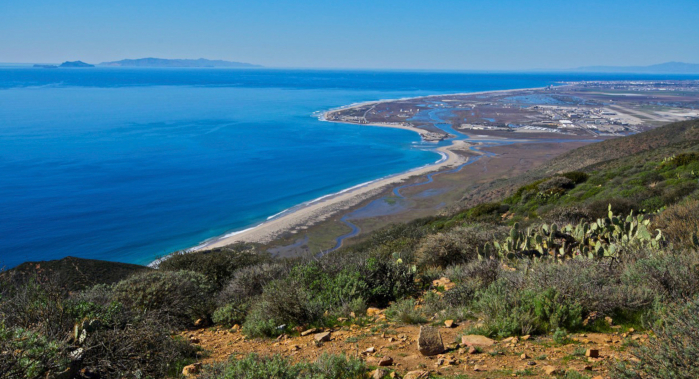The California Current is one of only four temperate upwelling systems in the world. Seasonal upwelling of nutrient-rich waters fuels a highly productive ecosystem, supporting biodiversity and fisheries that, along with coastal tourism, are a foundation of California’s economy.
Yet California’s coasts and oceans are also under increasing threat. Relatively few fisheries are managed based on robust scientific assessments, and more needs to be done to avoid overfishing and reduce bycatch. Plastics and other pollutants are pervasive. Climate change compounds these challenges. Ocean chemistry is changing. Sea levels and temperatures are rising – threatening important resources, biodiversity, and human populations.
Fortunately, the coastal and ocean ecosystems of California are bolstered by a network of marine protected areas and some of the most science-based marine policies in the world. Conservancy scientists look to build on those foundations by applying science and technology to enhance resilience of marine resources in the face of emerging threats.




Evan Fox, Sean Hastings, Melissa Miller-Henson, Dominique Monie, John Ugoretz, Adam Frimodig, Craig Shuman, Brian Owens, Rebecca Garwood, Darci Connor, Paulo Serpa, Mary Gleason
This paper explores the strategies used to address policy issues that arose in marine protected area (MPA) planning process in California. The authors provide examples from six specific topic…Matthew S. Merrifield, Will McClintock, Chad Burt, Evan Fox, Paulo Serpa, Charles Steinback, Mary Gleason
This paper reviews the creation and use of MarineMap, a spatial decision support system that enabled stakeholder participation in designing marine protected areas (MPAs). The authors highlight why it…Evan Foxa, Eric Poncelet, Darci Connor, Jason Vasques, John Ugoretz, Scott McCreary, Dominique Monié, Michael Harty, Mary Gleason
This paper examines how differences in regional characteristics and lessons learned influenced three important elements of the stakeholder process of California's Marine Life Protected Area (MLPA)…Kate Labrum, Dwayne Oberhoff
In 2011, the west coast groundfish fishery transitioned into a catch share fishery, or Individual Fishing Quota management system. Under this type of management system, the annual total allowable…James Lindholm, Mary Gleason, Donna Kline, Larissa Clary, Steve Rienecke, Michael Bell
This report summarizes the results of a multi-year study (June 2009 to December 2012) to assess the impacts of bottom trawling on seafloor habitats and associated biological communities. This project…Jennifer Carah, Jason Pelletier
A two-page summary of salmon restoration efforts at the Garcia River Forest on the North Cost of California focusing on the reintroduction of wood in streams as a strategy.The Nature Conservancy, Jennifer Carah
Salmon and trout thrive in streams with cool water, low levels of sand and silt, and deep, shaded pools. Intensive forest management in California over the last 150 years led to the removal of these…Halpern, B.S., Diamond, J., Gaines, S., Gelcich, S., Gleason, M., Jennings, S., Lester, S., Mace, A., McCook, L., McLeod, K., Napoli, N., Rawson, K., Rice, J., Rosenberg, A., Ruckelshaus, M., Saier, B., Sandifer, P., Sholtz, A., Zivian, A.
This paper informs emerging efforts to implement coastal and marine spatial planning (CMSP) in the United States, Europe and elsewhere around the world. In order to identify priority needs for…Shaw, M.R., L. Pendleton, D.R. Cameron, B. Morris, D. Bachelet, K. Klausmeyer, J. MacKenzie, D.R. Conklin, G.N. Bratman, J. Lenihan, E. Haunreiter, C. Daly, P.R. Roehrdanz
As the climate warms, changes in ecosystems will impact human communities and livelihoods. This paper, together with a California Energy Commission Scenarios Report of the same name, explores the…Mary Gleason, Sarah Newkirk, Matt Merrifield, Jeanette Howard, Robin Cox, Megan Webb, Jennifer Koepcke, Brian Stranko, Bethany Taylor, Mike Beck, Roger Fuller, Dick VanderSchaaf, Jena Carter
While significant progress has been made over the past few decades in improving estuarine water quality, restoring wetland habitats, and incorporating estuarine habitats into managed areas, estuarine…Mary Gleason, Scott McCreary, Melissa Miller-Henson, John Ugoretz, Evan Fox, Matt Merrifield, Will McClintock, Paulo Serpa, Kathryn Hoffman
This paper describes the planning process for California's Marine Life Protection Act (MLPA) in north central California. The process represents a case study in the design of a regional component…Mary Gleason, Chuck Cook, Michael Bell, Erika Feller
This editorial highlights the polarization and lack of innovation in U.S. fisheries management, using the West Coast groundfish fishery as an example. The authores focus on the need for new…Dan Laffoley, Alan T. White, Stacey Kilarski, Mary Gleason, Scott Smith, Ghislaine Llewellyn , Jon Day , Annie Hillary, Victoria Wedell, Daphine Pee
With government, agency and organizational partners, Conservancy scientists helped publish an IUCN guidebook to inspire conservation investment in global marine protection and provide a case study…M.D. White , J.A. Stallcup, K. Comer, M.A. Vargas, J.M. Beltran Abaunza, F. Ochoa, S.A. Morrison
The California South Coast Ecoregion, a global biodiversity hotspot, is bisected by the US-Mexico border. Development near the border, ranging from urban sprawl to border security infrastructure,…Mary G. Gleason, Matt S. Merrifield, Chuck Cook, Audrey L. Davenport, Rebecca Shaw
This study is the first marine gap analysis for California. It quantifies what is protected and what is not and highlights conservation needs and opportunities. Less than 5% of marine habitats are…